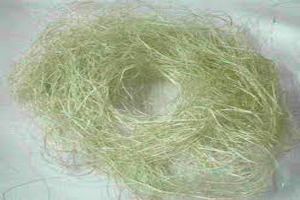
Assam’s first ramie variety of fibre developed being named after Hazarika
YarnsandFibers News Bureau 2014-01-10 11:50:00 – GuwahatiThe first ramie variety of fibre developed in Assam being named after its legendary singer late Bhupen Hazarika. His name will now have a textile connection too.
This is the first variety developed by Ramie Research Station, which was established at Barpeta district more than five-and-a-half decades ago. The research station is a sub-station of the Central Research Institute for Jute and Allied Fibres, Barrackpore, West Bengal.
A.K. Sharma, scientist-in-charge, Ramie Research Station, Sorbhog, told The Telegraph today that late Bhupen Hazarika’s message of peace, prosperity and harmony will be spread through this oldest, traditionally grown, natural fibre crop variety in Assam.
The delay in developing the first variety, sources said was not much interest shown to develop ramie for years, especially as the institute lacked manpower and also had security problems.
Ramie (Boehmeria nivea), one of the oldest vegetable fibres, has been used for thousands of years. Its existence has been observed in mummy cloths in Egypt. The fibre is native to Southeast Asian countries, including China and the Philippines.
The variety, R-1411 (Hazarika), has been identified and submitted for release to the central variety release committee of the Indian Council of Agricultural Research after being tested at three testing locations — Nagaon, Sorbhog in Barpeta district and Cooch Behar in West Bengal.
The variety has attracted the attention of farmers for good performance in adaptive trials.
R-1411 had better quality parameters in fibre colour and low gum content which will fetch additional benefits. Its yield is 6.77 per cent higher than others, depending on agronomic management and climatic conditions during crop growth. It has the potentiality to lift the national yield to 16 quintal/hectare/year (under rain-fed conditions) and 24 quintal/hectare/year (under irrigated conditions) and ensure additional productivity per hectare. It has also good biotic resistance for diseases and pests.
The production of ramie in the country is 12 metric tonnes, of which 10MT is produced in the Northeast. Of the 100 hectares under ramie cultivation in the country, 90 hectares are in the Northeast. The production of ramie in China was 124,000MT in 2011.
Jute commissioner Subrata Gupta said that there are challenges in ramie production but efforts are under way to overcome it.
In northeastern states, especially in Assam, ramie is grown because of its congenital climatic condition and is popularly known as rhea. Conventionally, dresses and fishing nets used to be woven in Assam from ramie fibre.
According to the Central Research Institute for Jute and Allied Fibres, the fibre crop should be made popular. A lot of steps are being taken for mechanization of ramie cultivation. This has led to 75 per cent reduction in the cost of cultivation.
Ramie is considered a valuable textile fibre for its high tensile strength, lustre and microbial resistance. The fibre is also much in demand globally because of its high tensile strength and eco-friendly image.
Market Intelligence
Ask for free sample Report

experience
Customer Base
dedicated team
Countries Served Worldwide









